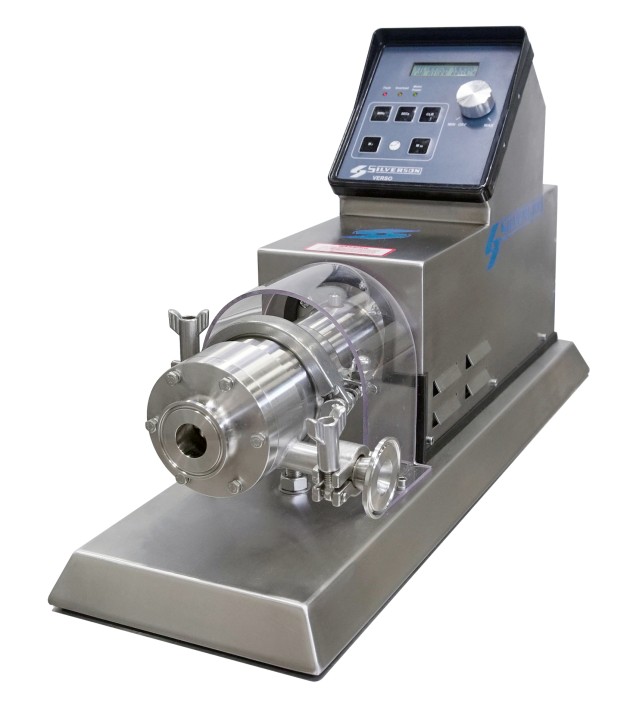Creating a stable emulsion can be a challenging task, even with the use of emulsifiers. It is a critical stage in the production of many pharmaceutical and cosmetics products, and one that Silverson mixers, supplied by J.L. Lennard, can simplify.

The efficacy, quality, texture, shelf life and appearance of pharmaceutical and cosmetic creams and lotions are highly dependent on the stability of the emulsion.
An emulsion is a mixture of two or more immiscible liquids – one being oil based and the other water based, or “aqueous”. Emulsions are described as immiscible liquids because they cannot easily be mixed together without separating and this can often cause problems during manufacture if not executed correctly.
In order to form a stable emulsion, whether you are producing an oil-in-water or water-in-oil emulsion, the mixing equipment needs to impart a large amount of energy into the mix to ensure the globule, or droplet size of both phases is reduced finely enough that the phases are completely and uniformly dispersed into one another.
Conventional mixers and agitators, which are suitable for basic liquid/liquid blending, are unable to form a stable emulsion because they do not have the necessary means to impart large amounts of energy into the mix. This type of mixing equipment simply moves the two liquid phases around the vessel, so although it may appear as though the phases have blended, the droplet size hasn’t been significantly reduced, so once the agitation stops the emulsion will soon separate into the two distinct phases once more.
High shear mixing subjects the liquids to intense high-energy which reduces the droplet size sufficiently and allows the two phases to combine, resulting in a stable emulsion which will not separate once the shear energy has been removed.
Successfully manufacturing emulsions requires the right balance of ingredients, processing techniques and equipment. With a Silverson mixer, says local distributor JL Lennard, you can take one of these factors out of the equation. Silverson High Shear mixers are able to rapidly produce a fine, uniform emulsion with a droplet size of 2 to 5 microns, the company says. Finer emulsions down to 0.5 microns can be obtained, depending on the formulation.
Silverson Machines offer a range of in-tank and in-line mixers widely used for preparation of emulsions, from laboratory scale-up to bulk production units – and repeatability and batch-to-batch consistency are guaranteed. And now, following the launch of the Verso-UHS-HV Laboratory in-line mixer, high viscosity products such as creams and lotions can be produced at laboratory scale.
The Silverson Verso-UHS-HV is designed for processing higher viscosity mixes than the standard Verso model. This model incorporates the same specialised and innovative ‘pumping rotor’ design as the production scale UHS-HV In-Line mixer, which substantially increases its self-pumping capacity and facilitates easy scale up to Silverson’s production scale UHS-HV Series In-Line mixers






